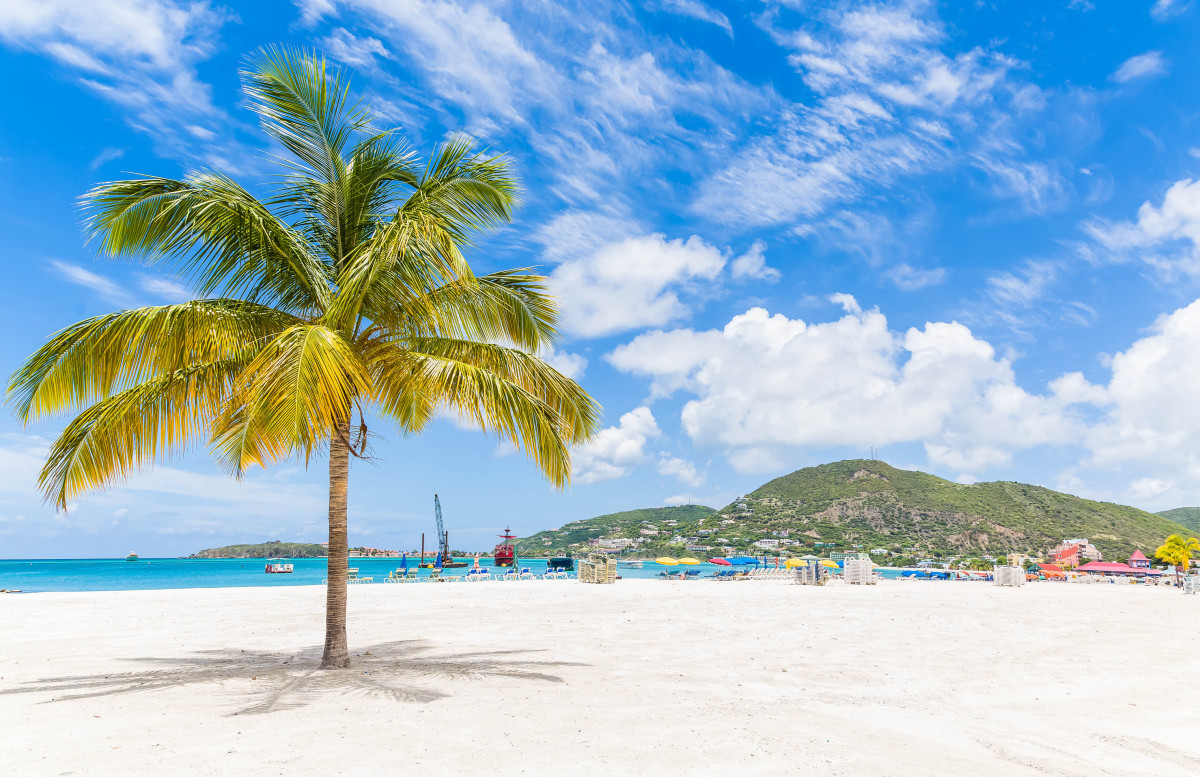The marine sector is driving the need for highly skilled employment, like rigging specialists.
PHILIPSBURG–St. Maarten is potentially missing out on millions of dollars in revenue from the yacht industry, according to St. Maarten Marine Trades Association (SMMTA) president Christopher Marshall.
“Despite the global coronavirus pandemic, the international yachting industry has grown over the past year, and steady growth is projected at a rate of 5.2 per cent,” he said.
Due to government’s quick action in the face of the lockdown in the spring of 2020, St. Maarten was able to have a successful 2020-2021 yachting season, said Marshall. “St. Maarten even saw a number of large vessels in our waters during the summer of 2020.”
The SMMTA board worked hard in 2020 to put a COVID-19 protocol in place, to make the entry rules clear for yachts. Marshall: “We worked very closely with the Ministry of TEATT [Tourism, Economic Affairs, Transport and Telecommunication – Ed.] and Maritime Affairs, creating a Task Force for the yachting industry with participation of police, Coast Guard, Immigration and Collective Prevention Services (CPS). The cooperation with them and with the Tourist Office was very good.”
There are government officials who see the benefits of the marine industry and are in favour of putting new rules in place, Marshall said. “This public-private sector cooperation was hugely successful and enabled St. Maarten’s marine industry to welcome a significant number of yachting clients this past season.”
Although there is change happening, as is evidenced from the successful protocol, Marshall emphasised that “we need to go a lot deeper and a lot faster to capture a significant market.”
A report by Frank Bruinsma and Thomas de Graaff in 2015 under Vrije Universiteit of Amsterdam commissioned by the Superyacht Builders Association determined that the annual global expenditure on maintenance, repairs and operations on yachts over 30 metres was valued at 11.9 billion euros. “Note that the yachting market in St. Maarten covers a much broader spectrum of yachts from as small as 10 metres to as large as 150 metres,” Marshall said.
Furthermore, recent surveys suggest the market is expected to expand at a compound annual growth rate (CAGR) of 5.2 per cent from 2021 to 2028. This year’s Global Order Book for superyachts paints the picture of an industry in robust health, with 821 superyacht projects being built or ordered globally, an increase on last year’s number of 807.
St. Maarten is one of the most popular countries for superyacht visits. With 43 mega-yachts docked in Simpson Bay Lagoon and at Port St. Maarten in 2019, the island was ranked number six in the world in terms of superyacht visits.
“It would be a fair guess to say that over the course of a season, from November to May, the combined value of the large and small yachts that spend some time here could easily be over US $5 billion. Nevertheless, our sector is not facilitated by government at the level and pace that we would like to see as a provider of economic growth and opportunities for the local labour market.”
Data on the size of the yachting industry in St. Maarten are not readily available. According to a 2020 report by the National Recovery Program Bureau, the sector is “too private for data collection.” Marshall contradicts this.
“It is not difficult to determine a value for the contribution of the sector,” he countered. “For this you do not need to talk to the owners of mega-yachts, but can instead engage organisations such as the SMMTA. Even more, data does exist: a survey in 2012 found that the sector generated more than $300 million per year and represented 15 per cent of St. Maarten’s GDP [gross domestic product]. Now, almost 10 years later, it seems quite clear that these numbers have not decreased, so why can’t we take action based on what we do know?”
Hurricane Irma wrought total devastation on St. Maarten on September 6, 2017. However, the marine sector, in comparison to most sectors, recovered quickly, and was one of the most significant economic contributors to the St. Maarten economy in the 2017-2018 season. Although many land-based facilities were unable to repair in time to benefit from the season, the marine businesses were quick to recover.
The post-COVID economic recovery has been similar – with the marine industry driving the sole economic activity in the spring and summer of 2020, and foreshadowing a very strong winter season, even while most land-based businesses were far from average numbers.
Marshall continued: “We believe that these two experiences show that not only does yachting have huge potential in normal times, but it is also an industry that recovers quickly, and thus permits St. Maarten to generate economic activity even during the most difficult and trying times.”
SMMTA is convinced that the yachting sector in St. Maarten can grow much more, said Marshall. “If you want to argue that data is insufficient you can rely on a calculation formula that is used worldwide in the yachting industry, which is that 10 per cent of the value of a yacht is spent annually on its maintenance and operation. Therefore a $90 million mega-yacht spends about $9 million annually. Our aim must be to increase time spent in St. Maarten to capture a larger piece of this pie,” he argued.
“Looking at the total vessels visiting our shores per year and the average time that they spend here – data readily available from Simpson Bay Lagoon Corporation (SLAC) and Port St. Maarten – the potential expenditure per year is fairly easily calculable. To capture the available market, however, there is need for improvement and expansion of the service package in St. Maarten to boost this industry and keep it competitive in the region.”
Islands as far south as Grenada are embracing their marine sector, Marshall said. “The governments of Antigua and St. Kitts have officials that are dedicated to the yachting industry, and they have put laws and rules in place that promote investments in this sector. Yachting is considered an export industry; you are selling goods and services to people that will not be staying on the island. Several islands have changed their laws to facilitate the industry, but so far in St. Maarten we have not put any similar effort.
“Other islands are way ahead of us. We have to understand that St. Maarten is not primarily a destination, but more of a hub,” he continued. “We are the home base for yachts for their Caribbean season, and this role has the potential of significant and lasting economic impact.
“St. Maarten must be the place where the yachts fuel, provision, start and end charters, take on crew, do maintenance and repairs and so on. We need to put policies in place to harness the unique position that we have. This requires a thorough examination of all rules, services and practices in place – from immigration to tax, from security to levels of service at the fixed-base operators (FBOs) with private terminals for business aviation.
“We have come a long way, but there is much farther to go. Swift and significant action is needed to capture this market that could be one of the key economic drivers of our economy, not only by bringing in sufficient spending, but also by driving the need for highly-skilled employment and the capacity to invest to train the St. Maarten population to learn those skills.
“Our cooperation with numerous agencies in government last year was a powerful and successful start. It is imperative that we continue together to address remaining issues and secure St. Maarten’s place as the yachting hub in the Caribbean.”
~ This is the first in a series of three articles on St. Maarten’s yachting industry. ~
Source: The Daily Herald https://www.thedailyherald.sx/islands/smmta-eyes-more-government-support-in-taking-yachting-industry-to-next-level


